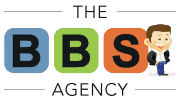Whether you have a degree in business or not, we all learn how to start a business the hard way our first go around. The founder of Flexiple and Remote Tools started these two successful startups, and now he’s sharing all the biggest marketing lessons he wishes he learned while in business school. When you’re first starting out, you want to work on SEO and building an email list right away, but be patient while you wait for the numbers to go up. Building a community takes time. When it comes to social media marketing, be personable! People want to buy from people nowadays and brands they feel they have a connection with. Talk to your users on social media, show them all the behind-the-scenes experiences (both good and bad), and really show them who you are and what you’re about. When it comes to a launch, you can never plan too well. Marketing starts from the very first interaction, well before they turn into customers. But no business grows overnight. Pay attention to your users and their feedback, focus on delivering value and creating a high quality product, and then be patient. You’ve got this! If you have any questions about marketing or want us to handle it for you, reach out to us at Prebuilt Sites or The BBS Agency. We’d love to help you out!
My MBA program didn’t have all the answers when it came to marketing. Business school taught me some basics, but when I co-founded my own startup called Flexiple while still in school, I learned the hard way.
Flexiple is a network that helps companies match with freelance designers and developers. Four years after starting it from scratch, we hit $2 million in annual revenue. But along the way, there was an incredible amount of trial and error as I figured out how to launch a product, think about SEO, find the right distribution channels, and much more.
Those experiences came in handy when I started Remote Tools, an online community for remote workers. Suddenly, some of my previous hurdles didn’t seem so daunting. But starting—and maintaining—and online community brought its own set of challenges.
Now that both sites are doing well, I wanted to share what I learned about marketing over the years. Here’s my own crash course, full of the 13 biggest marketing lessons I wish professors taught me in business school.
1. Marketing starts way before you ship the product
You should begin building your audience well before you finish coding or make any sort of public announcement about your plans.
For instance, I gained 1,259 subscribers for my newsletter before I wrote a single word of content about my last company. How? One of my LinkedIn posts went viral. The post was simply an announcement about starting a newsletter, and it gave a glimpse of what to expect when you subscribe.
2. Don’t leave your launch day up to luck
I got lucky when I launched Remote Tools in 2018. I stumbled upon Product Hunt and submitted what we had without preparing much. I even made the mistake of submitting late at night, but fortunately, one of the site admins rescheduled my post for the next day. I may not be here writing this to you if that didn’t happen. Right off the bat, we had four deals and 10,000 visitors.
But after that, I never left a launch to luck. I’ve since done 10 successful Product Hunt launches and spent months preparing a marketing plan for each.
Whenever you decide to launch, you should have:
- A list of people (e.g. beta users) who can support you
- A list of channels where you can talk about your launch
- Approved content and social posts ready to post on launch day
3. Distribute on multiple channels because you can’t guarantee which ones will work
When you’re piecing together a launch calendar, make sure you plan to post on multiple distribution channels. The core details won’t change much, so using an additional channel only requires incremental effort.
For instance, we prepared for months to launch new Flexiple feature called Scale on Product Hunt, but it didn’t make to the top 10 products of the day. However, the same day, we had huge success on Reddit, to the tune of 150,000 visitors in 24 hours.

Source: Contently Strategist
4. Think beyond the launch
We made a huge mistake in 2018 with the first version of Remote Tools. Even though 10,000 people visited our site in a matter of days, we had nothing in place to capture their contact info.
When you get a traffic spike on launch day, make sure you give people a way to follow you and return to your site.
In 2019, when we launched the Remote Tools newsletter, we had multiple CTAs on the website to gather users’ details. In two days, we lined up over 1,500 subscribers.

Source: Contently Strategist
5. Focus on SEO from day 1
SEO is a gradual process. It takes time to build your website authority and have people link back to your work. So the earlier you can focus on SEO, the better off you’ll be.
You can help yourself early on by taking care of on-page ranking factors like title tags and meta descriptions. In a sense, you’re telling readers and search engines that you know what you’re doing.
But I also recommend focusing heavily on building backlinks. That’s what we did for both Flexiple and Remote Tools in the first six months after launching. This primarily included writing guest posts on high authority websites in our domain. You can drive more backlinks by releasing original research or unique tools that would warrant press coverage.
6. And be patient as you wait for rankings to improve
Last year, we conducted some new keyword research on our blog. We identified a new list of target keywords that hit the sweet spot of high volume and low competition, knowing that it would take months (if not a year or two) to see our rankings improve.
In the past, we only really published long articles, but to produce content quicker and cover all the keywords, we decided to write shorter posts as well. In 2021, this has really started to pay off.

Source: Contently Strategist
As you can see in the chart, our traffic only inched up from October to December. But since the new year came along, our traffic has jumped 250 percent, much of this because of the high-value keywords we went after.
7. Email lists are essential
I’m not going to spend too much time on this because it’s been covered before on The Content Strategist, but an email newsletter is one of the best ways to reach your audience on a regular basis.
If you want to read more about how I write and manage multiple newsletters, check out this Twitter thread:
I write & manage 4 newsletters with 5000+ subscribers and closed down 2 others with 2000+ subscribers (due to lack of time).
15 useful & non-obvious tips on how to run & market your newsletter 🧵
— Hrishikesh Pardeshi (@hrishiptweets) March 30, 2021
8. Side projects can boost your traffic
In April 2021, I built a Trump Chatbot as a joke, hoping it would go viral. It didn’t. So I stuffed it in the back of a drawer and forgot about it.
That changed in November 2020 during the U.S. election. I redistributed it across some go-to channels like LinkedIn, and it started to get some traction. As an added bonus, the chatbot now ranks on Google and brings in a tiny bit of traffic to Remote Tools each month.

Source: Contently Strategist
Even if a side project veers from your typical brand voice or marketing strategy, don’t discount it. Remote Tools actually started as a side project for Flexiple. We launched it in 2018 to drive more traffic and generate leads. It took off so much that we ended up spinning it off into its own site.
9. Build a consistent distribution checklist
Sporadic content distribution yields sporadic results. Your distribution efforts have to be consistent. For instance, my distribution engine for my content is a simple table with checkboxes for the following channels:
- HackerNews
- IndieHackers
- Remote Clan
Find the handful of channels that make the most sense for your company, and keep supplying them with consistent posts so audiences get to know you.
10. Talk to your customers (rather than at them)
This lesson applies to multiple teams, but marketing should take it to heart. I keep in touch with a few of Flexiple’s initial clients and ask them to join brainstorming meetings when possible. They’ve basically become like friends to the company, and that’s led to insightful contributions over the years.
For instance, when we first looked into paid ads, one of our clients joined a number of discussions and offered advice based on their own experiences with Google Ads. In fact, we ended up working with the agency they recommended.
11. Social media users want to talk to people more than brands
Every company needs to be active on social media, but I’m a firm believer that your personal accounts should take priority over them. People want to connect with founders, experts, and leaders. Plus, it’s much easier to have a conversation when you know who you’re talking to.
For brand accounts, I tend to focus more on sharing company updates, posting links to content, and offering customer support help.
12. Share both good and bad experiences
From afar, it can seem like experts on social media are perfect. Everything they do works out, and they’re constantly posting about new achievements (especially on LinedkIn). But I think there’s a lot of value in sharing the missteps along the way.
A number of the lessons I’ve written about here came from trial and error. One thing I like to do is write about a new product or feature as we’re building it. This approach lets me:
- Explain why we are building this product or feature
- Give a behind-the-scenes look at how we built it
- Detail specific data, like how much money we spent or how many hours something took, which tends to resonate because people love numbers
For instance, I wrote a behind-the-scenes Twitter thread about how I built a community platform and published a version of it on the Remote Tools blog. Then I shared it on Dev.to & Hashnode, where I received more encouraging responses and feedback.
13. Marketing isn’t always about acquiring customers right away
A lot of my marketing success has come down to trust and patience. Build trust with your audience by providing value selflessly. Then show people how you can help them when they’re ready to reach out. Simple, I know, but still important ideas that I always come back to in the end.
Originally published on Contently Strategist.




